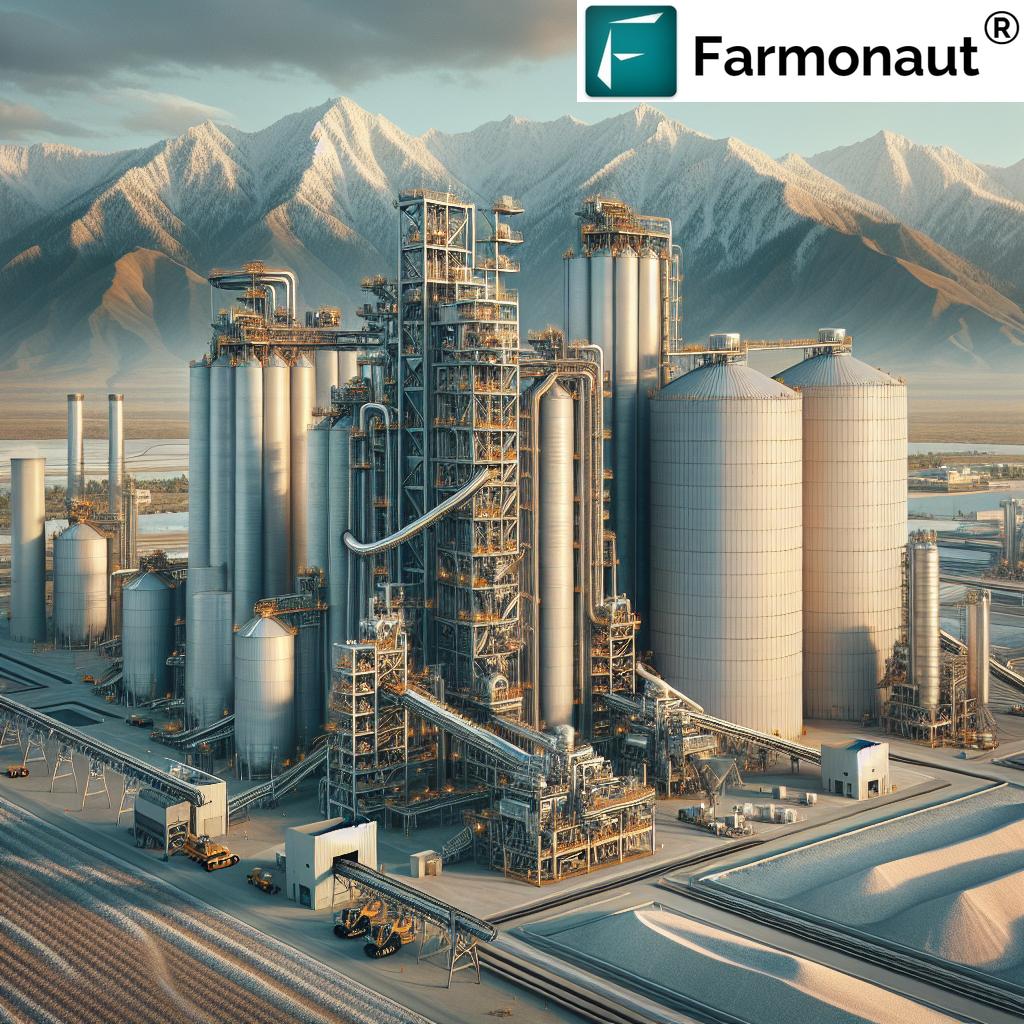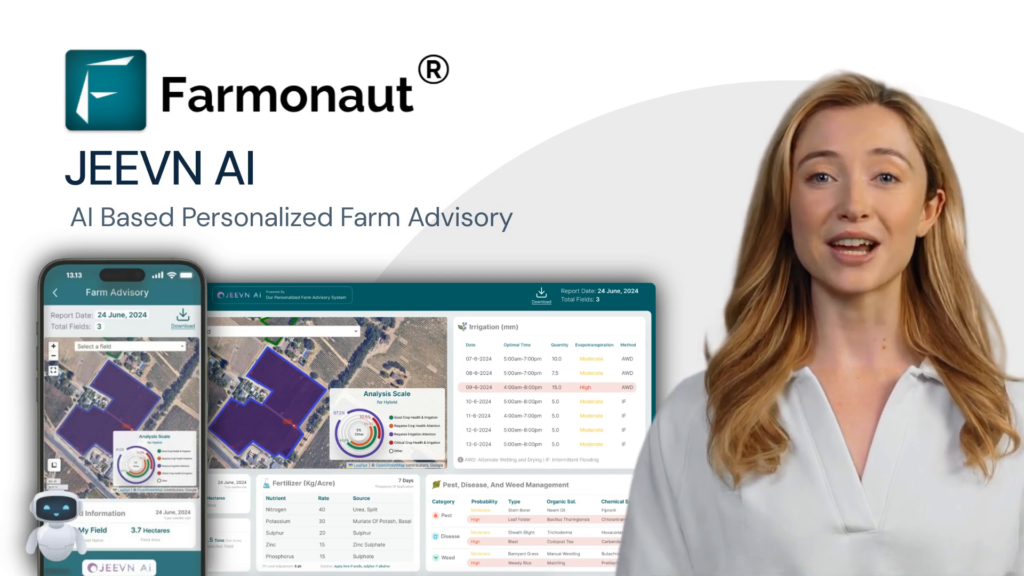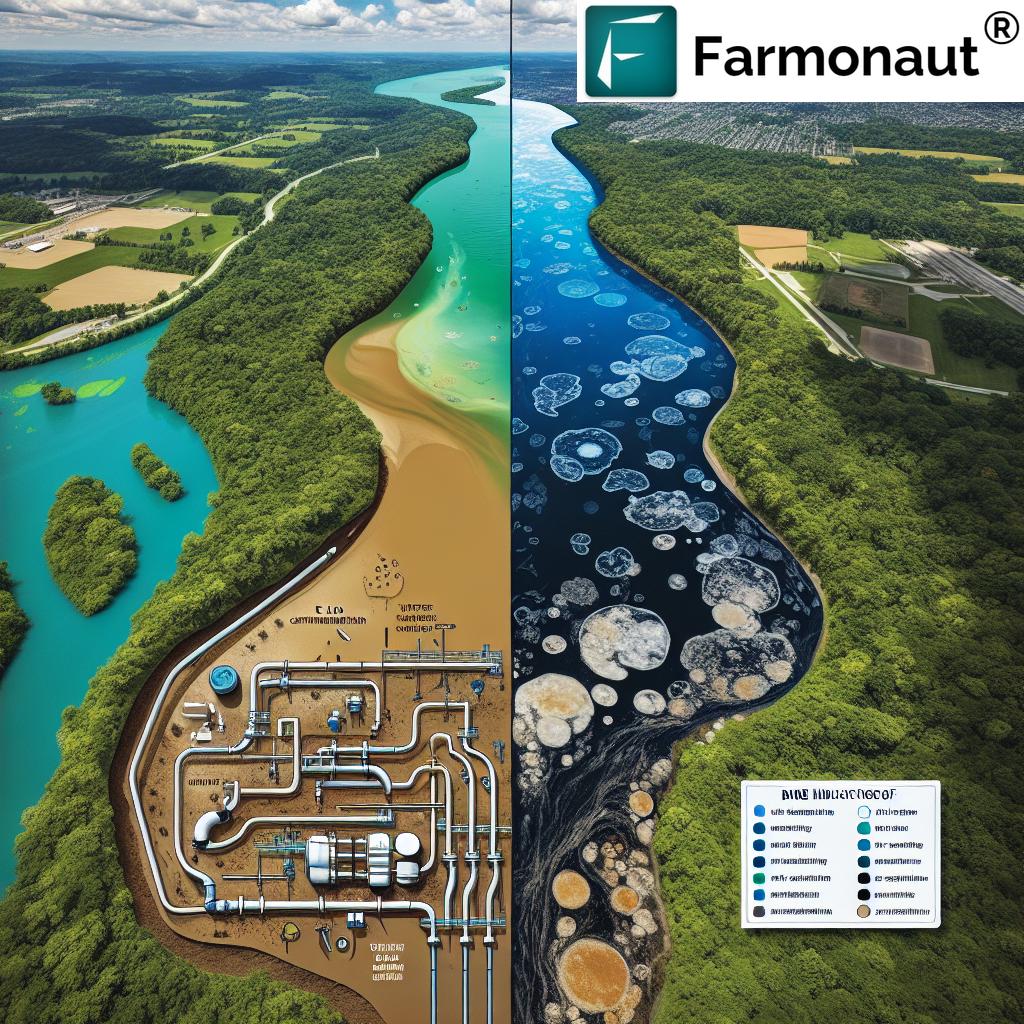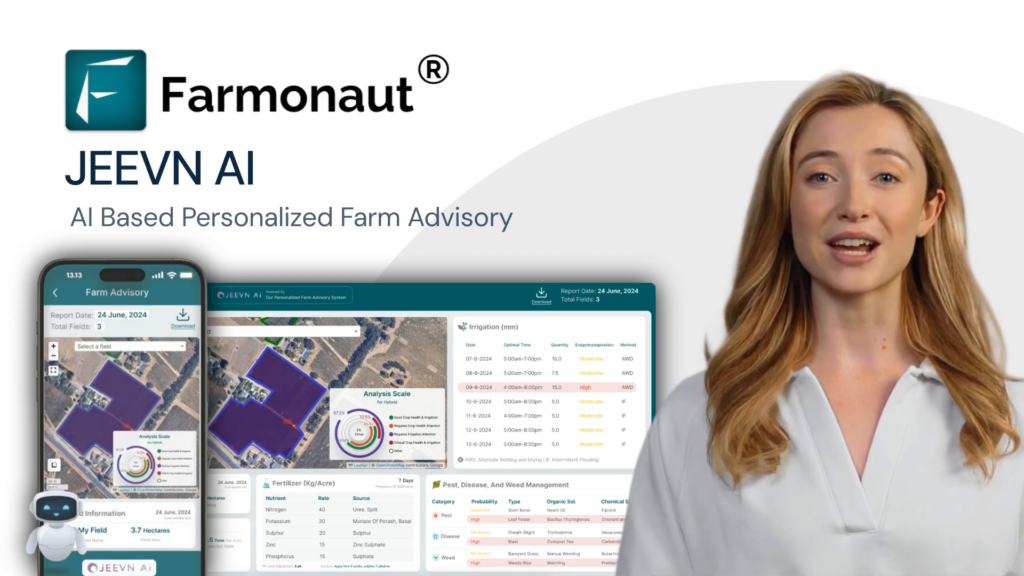Boosting Phosphate Fertilizer Production: Vertically Integrated Plants in Idaho, Texas, and Brazil
“Vertically integrated fertilizer plants in Idaho, Texas, and Brazil can produce over 1 million tons of phosphate fertilizer annually.”
In the ever-evolving landscape of global agriculture, phosphate fertilizer production plays a crucial role in ensuring food security and sustainable crop yields. As we delve into the world of specialty fertilizer companies and their vertically integrated operations, we’ll explore how recent developments in Idaho, Texas, and Brazil are shaping the future of this vital industry.
The Rise of Vertically Integrated Phosphate Fertilizer Plants
Vertically integrated fertilizer businesses have become the cornerstone of efficient phosphate fertilizer production. These operations control multiple stages of the production process, from mining raw materials to manufacturing and distributing the final products. This integration allows for better quality control, cost management, and adaptability to market demands.
Let’s take a closer look at the key players and their operations in Idaho, Texas, and Brazil:
Idaho: A Powerhouse of Phosphate Production
Idaho has long been recognized as a significant contributor to the United States’ phosphate fertilizer industry. The state’s rich phosphate deposits and strategic location have made it an ideal hub for vertically integrated operations.
- Conda Phosphate Operations: Located in southeastern Idaho, the Conda facility is a prime example of a vertically integrated phosphate fertilizer business. With an impressive production capacity of approximately 550,000 tons per year, Conda manufactures a variety of products, including:
- MAP (Monoammonium Phosphate)
- MAP+ (MAP with micronutrients)
- Superphosphoric acid (SPA)
- Merchant grade phosphoric acid (MGA)
- Ammonium polyphosphate (APP)
- Hydrofluorosilicic Acid Production: In addition to its primary fertilizer products, the Conda facility also produces approximately 27,000 tons of hydrofluorosilicic acid (HFSA) annually, showcasing the plant’s diversified output.
The success of Idaho’s phosphate fertilizer industry can be attributed to its abundant natural resources and the implementation of advanced production technologies. These factors have allowed the state to maintain its position as a leader in the U.S. fertilizer market.
Texas: Expanding Horizons in Phosphate Processing
While Texas may not be as well-known for phosphate production as Idaho, the Lone Star State has been making significant strides in the fertilizer industry. Recent developments have positioned Texas as an emerging player in phosphate fertilizer production.
- Strategic Location: Texas’s extensive transportation infrastructure and access to major ports make it an ideal location for fertilizer production and distribution.
- Diversified Production: Texas-based fertilizer plants are focusing on producing a wide range of products, including phosphoric acid, ammonium phosphates, and specialty fertilizers with micronutrients.
- Technological Advancements: Companies operating in Texas are investing in cutting-edge technologies to improve production efficiency and reduce environmental impact.
As Texas continues to expand its presence in the phosphate fertilizer market, we can expect to see increased production capacities and a growing emphasis on sustainable manufacturing practices.
Brazil: A Rising Star in Global Phosphate Production
Brazil has emerged as a major player in the global phosphate fertilizer industry, with its vertically integrated plants contributing significantly to both domestic and international markets.
- Arraias Phosphate Operations: Located in Tocantins, Brazil, the Arraias facility is a prime example of the country’s growing phosphate industry. This vertically integrated plant boasts impressive production capacities:
- Approximately 500,000 tons per year of single superphosphate (SSP) and SSP with micronutrients (SSP+)
- Around 40,000 tons per year of excess sulfuric acid, with a gross sulfuric acid production capacity of 220,000 tons per year
- Expanding Production: Brazilian companies are investing heavily in expanding their phosphate fertilizer production capabilities to meet growing domestic and international demand.
- Focus on Sustainability: Many Brazilian phosphate producers are implementing environmentally friendly practices and technologies to ensure sustainable growth in the industry.
Brazil’s rise in the phosphate fertilizer sector is a testament to the country’s rich natural resources and commitment to agricultural development.

Advancements in Phosphate Fertilizer Production Technologies
The phosphate fertilizer industry is constantly evolving, with new technologies and processes being developed to improve efficiency, product quality, and environmental sustainability. Some of the key advancements include:
- Enhanced Sulfuric Acid Production: Sulfuric acid is a crucial component in phosphate fertilizer manufacturing. Recent technological improvements have allowed companies to increase their sulfuric acid production capacity by up to 50% in some cases.
- Micronutrient Integration: The development of fertilizers with integrated micronutrients, such as MAP+ and SSP+, has become increasingly important. These products provide crops with a more comprehensive nutrient profile, leading to improved yields and crop quality.
- Precision Application Technologies: While not directly related to production, advancements in precision agriculture technologies are influencing how phosphate fertilizers are applied. This has led to more efficient use of fertilizers and reduced environmental impact.
These technological advancements are not only improving the efficiency of phosphate fertilizer production but also contributing to more sustainable agricultural practices.
The Impact of Vertically Integrated Plants on the Global Fertilizer Market
Vertically integrated phosphate fertilizer plants in Idaho, Texas, and Brazil are having a significant impact on the global fertilizer market. Here are some key observations:
- Increased Supply Stability: By controlling multiple stages of production, these plants can better manage supply chain disruptions and ensure a more stable supply of fertilizers to the market.
- Competitive Pricing: Vertical integration often leads to cost efficiencies, which can result in more competitive pricing for farmers and agricultural businesses.
- Product Diversification: These plants are able to produce a wide range of phosphate-based products, from basic fertilizers to specialty formulations with micronutrients, meeting diverse agricultural needs.
- Global Market Influence: The combined output of these vertically integrated plants contributes significantly to the global phosphate fertilizer supply, influencing market trends and prices.
“Some specialty fertilizer companies have increased their sulfuric acid production capacity by up to 50% in recent years.”
Environmental Considerations in Phosphate Fertilizer Production
As the demand for phosphate fertilizers continues to grow, so does the need for environmentally responsible production practices. Vertically integrated plants in Idaho, Texas, and Brazil are taking steps to address environmental concerns:
- Water Management: Implementing advanced water recycling and treatment systems to reduce freshwater consumption and minimize wastewater discharge.
- Air Quality Control: Installing state-of-the-art air filtration systems to reduce emissions from production processes.
- Land Reclamation: Developing comprehensive plans for rehabilitating mined areas and restoring local ecosystems.
- Energy Efficiency: Investing in energy-efficient equipment and processes to reduce overall carbon footprint.
These environmental initiatives are crucial for ensuring the long-term sustainability of the phosphate fertilizer industry and maintaining its social license to operate.

The Role of Technology in Modern Phosphate Fertilizer Production
Technology plays a crucial role in enhancing the efficiency and sustainability of phosphate fertilizer production. Companies are leveraging various technological solutions to optimize their operations:
- Automation and AI: Implementing automated systems and artificial intelligence to improve process control and efficiency in fertilizer plants.
- Data Analytics: Utilizing big data and advanced analytics to optimize production processes and predict maintenance needs.
- Remote Sensing: Employing satellite and drone technology for mine planning and environmental monitoring.
- Blockchain for Traceability: Implementing blockchain technology to enhance supply chain transparency and product traceability.
These technological advancements are not only improving production efficiency but also contributing to more sustainable and responsible fertilizer manufacturing practices.
The Future of Phosphate Fertilizer Production
As we look to the future, several trends are likely to shape the phosphate fertilizer industry:
- Sustainable Production: Increasing focus on developing more environmentally friendly production methods and products.
- Precision Agriculture: Growing demand for customized fertilizer blends that cater to specific soil and crop needs.
- Resource Recovery: Exploring technologies to recover and recycle phosphorus from waste streams.
- Global Market Dynamics: Shifting patterns in global trade and geopolitical factors influencing production and distribution strategies.
These trends highlight the dynamic nature of the phosphate fertilizer industry and the need for continued innovation and adaptation.
Comparative Analysis: Phosphate Fertilizer Production in Idaho, Texas, and Brazil
| Location | Production Capacity (estimated tons/year) | Primary Products | Notable Developments |
|---|---|---|---|
| Idaho | 550,000+ | MAP, MAP+, SPA, MGA, APP, HFSA | Advanced vertically integrated operations, focus on diverse product range |
| Texas | 300,000+ (estimated) | Phosphoric acid, ammonium phosphates, specialty fertilizers | Emerging player, investing in new technologies and expanding production capacity |
| Brazil (Arraias) | 500,000+ | SSP, SSP+, Sulfuric acid | Rapidly growing market, focus on meeting domestic and international demand |
This comparison illustrates the unique strengths and focus areas of each location in the phosphate fertilizer industry. While Idaho boasts established operations with a diverse product range, Texas is emerging as a new player with a focus on technological innovation. Brazil, particularly the Arraias facility, represents the growing importance of South American production in the global market.
The Impact of Phosphate Fertilizer Production on Global Agriculture
The production of phosphate fertilizers in vertically integrated plants across Idaho, Texas, and Brazil has far-reaching implications for global agriculture:
- Food Security: Increased fertilizer production contributes to higher crop yields, supporting global food security efforts.
- Agricultural Productivity: Advanced fertilizer formulations help farmers optimize their crop production and land use efficiency.
- Economic Impact: The phosphate fertilizer industry creates jobs and stimulates economic growth in producing regions.
- Environmental Considerations: While fertilizers are crucial for agriculture, their production and use also raise environmental concerns that need to be addressed.
As the industry continues to evolve, balancing these factors will be crucial for sustainable growth and responsible resource management.
Challenges and Opportunities in Phosphate Fertilizer Production
The phosphate fertilizer industry faces several challenges but also presents numerous opportunities:
Challenges:
- Finite phosphate resources and the need for sustainable mining practices
- Environmental concerns related to production processes and fertilizer runoff
- Market volatility and geopolitical factors affecting global trade
- Regulatory compliance and evolving environmental standards
Opportunities:
- Development of more efficient and environmentally friendly production technologies
- Exploration of alternative phosphorus sources, including recycling and recovery
- Expansion into emerging markets with growing agricultural sectors
- Integration of digital technologies for improved production and supply chain management
Addressing these challenges while capitalizing on opportunities will be key to the industry’s long-term success and sustainability.
The Role of Research and Development in Advancing Phosphate Fertilizer Production
Research and development (R&D) play a crucial role in driving innovation and improvement in the phosphate fertilizer industry. Key areas of focus include:
- New Extraction Techniques: Developing more efficient and environmentally friendly methods for extracting phosphate from ore.
- Advanced Fertilizer Formulations: Creating specialized fertilizer blends that optimize nutrient uptake and reduce environmental impact.
- Waste Reduction Technologies: Innovating processes to minimize waste and increase the utilization of by-products.
- Precision Agriculture Integration: Developing fertilizers that work in conjunction with precision agriculture technologies for optimal application.
Continued investment in R&D is essential for addressing industry challenges and capitalizing on new opportunities in phosphate fertilizer production.
Global Market Trends and Economic Impact
The phosphate fertilizer market is influenced by various global trends and economic factors:
- Population Growth: Increasing global population drives demand for higher agricultural productivity and, consequently, fertilizers.
- Shifting Agricultural Practices: Changes in farming techniques and crop types affect fertilizer demand and formulation requirements.
- International Trade Dynamics: Trade policies, tariffs, and geopolitical events can significantly impact the global fertilizer market.
- Currency Fluctuations: Exchange rate variations affect the competitiveness of fertilizer exports from different regions.
Understanding these trends is crucial for phosphate fertilizer producers to make informed decisions about production, distribution, and market expansion strategies.
Sustainability Initiatives in Phosphate Fertilizer Production
Sustainability has become a key focus in the phosphate fertilizer industry, with companies implementing various initiatives:
- Circular Economy Approaches: Exploring ways to recycle and reuse phosphorus from waste streams.
- Renewable Energy Integration: Incorporating solar, wind, and other renewable energy sources into production processes.
- Water Conservation: Implementing advanced water recycling and treatment systems to reduce freshwater consumption.
- Biodiversity Protection: Developing comprehensive land management plans to protect and restore ecosystems around mining and production sites.
These sustainability initiatives are not only environmentally responsible but also contribute to long-term economic viability and social acceptance of phosphate fertilizer production.
The Importance of Phosphate Fertilizers in Modern Agriculture
Phosphate fertilizers play a critical role in modern agriculture, contributing to global food security and agricultural productivity:
- Essential Plant Nutrient: Phosphorus is crucial for plant growth, energy transfer, and root development.
- Yield Enhancement: Proper application of phosphate fertilizers can significantly increase crop yields.
- Soil Health: Balanced fertilization with phosphates helps maintain and improve soil fertility.
- Food Quality: Adequate phosphorus nutrition can improve the quality and nutritional value of crops.
As global population growth continues to drive demand for food production, the importance of phosphate fertilizers in agriculture is likely to increase.
Conclusion: The Future of Phosphate Fertilizer Production
The phosphate fertilizer industry, particularly in vertically integrated plants across Idaho, Texas, and Brazil, is poised for continued growth and innovation. As global demand for food increases and agricultural practices evolve, these production facilities will play a crucial role in meeting the world’s fertilizer needs.
Key takeaways include:
- Vertical integration provides significant advantages in terms of efficiency, quality control, and market responsiveness.
- Technological advancements are driving improvements in production processes, environmental sustainability, and product quality.
- Balancing economic growth with environmental responsibility will be crucial for the industry’s long-term success.
- Research and development will continue to play a vital role in addressing challenges and capitalizing on new opportunities.
As the industry moves forward, collaboration between producers, researchers, and policymakers will be essential to ensure sustainable and responsible phosphate fertilizer production that meets global agricultural needs while protecting our planet’s resources.
FAQs
- What is vertical integration in phosphate fertilizer production?
Vertical integration in phosphate fertilizer production refers to a business model where a company controls multiple stages of the production process, from mining raw materials to manufacturing and distributing the final products. - Why is Idaho a significant player in phosphate fertilizer production?
Idaho has rich phosphate deposits and strategic location, making it an ideal hub for vertically integrated operations. The state’s Conda facility, for example, has a production capacity of approximately 550,000 tons per year of various phosphate products. - What are some of the primary products produced in phosphate fertilizer plants?
Primary products include MAP (Monoammonium Phosphate), MAP+ (MAP with micronutrients), superphosphoric acid (SPA), merchant grade phosphoric acid (MGA), ammonium polyphosphate (APP), and single superphosphate (SSP). - How is Brazil contributing to global phosphate fertilizer production?
Brazil has emerged as a major player with facilities like the Arraias plant in Tocantins, which can produce approximately 500,000 tons per year of single superphosphate (SSP) and SSP with micronutrients (SSP+). - What are some of the environmental considerations in phosphate fertilizer production?
Environmental considerations include water management, air quality control, land reclamation, and energy efficiency. Many producers are implementing advanced technologies and practices to address these concerns.












